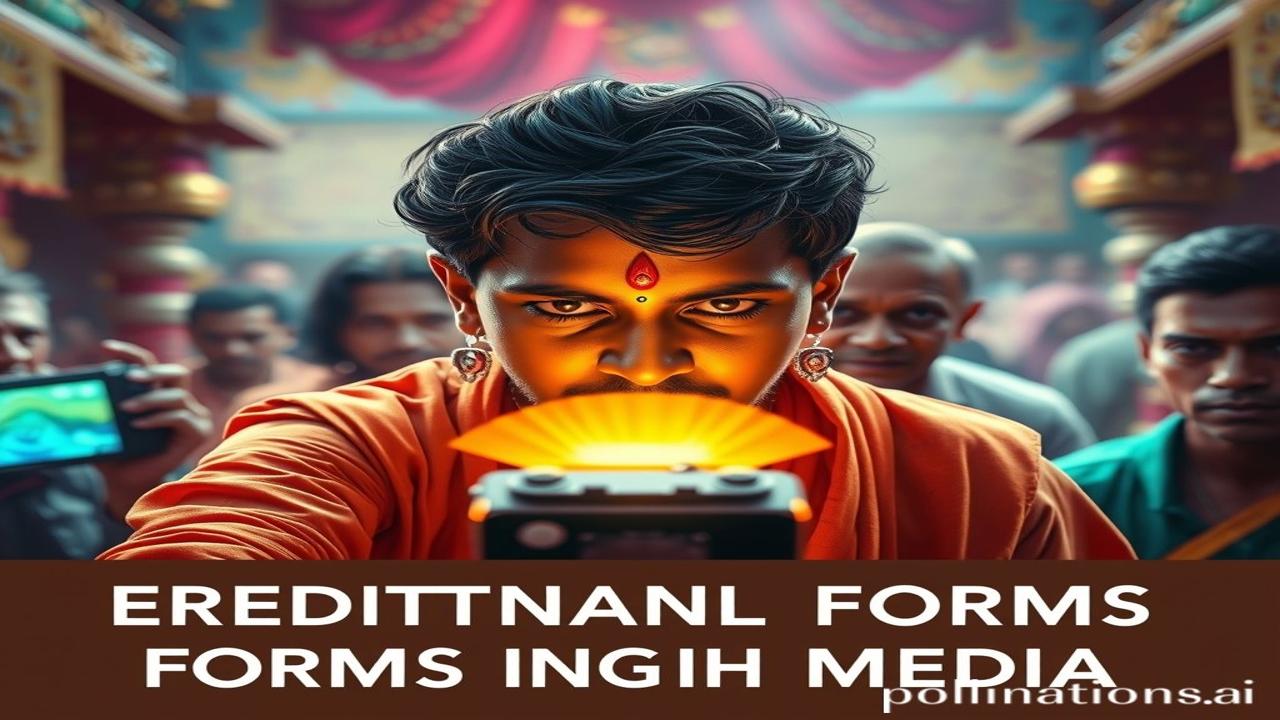Kho Gaye Woh Rang, Kho Gayi Woh Dhun: Traditional Entertainment vs. Modern Media
Kabhi socha hai, jab TV nahin tha, internet nahin tha, toh logon ka dil kaise behalta tha? Kya rang the woh, kya dhun thi woh… aaj, jab sab kuch digital hai, woh purani yaadein, woh kisse, woh mazakiya natak, kahin kho se gaye hain. This isn’t just about old vs. new; it’s about soul vs. screen. Chaliye, explore karte hain iss journey ko.
Shuruwat: The Story of Our Entertainment Heritage
Traditional entertainment, doston, koi aaj kal ki cheez nahi hai. Yeh toh hamari Sanskriti, hamare itihas ka hissa hai. Think back to the ancient times – performances used to be an integral part of life. We are talking about forms like:
- Kathak: U.P. ki shaan, with its swirling ghungroos and intricate footwork, narrating stories of Radha-Krishna.
- Bhavai: Gujarat ka rang, a folk theatre with vibrant costumes and humorous social commentary.
- Nautanki: Uttar Pradesh aur Bihar mein mashhoor, with its loud dialogues and melodramatic plots.
- Ramleela & Raasleela: Har saal Diwali ke around hone wale yeh performances, jo Ramayan aur Krishna ke jeevan ki kahaniyan dikhate hain.
- Puppet Shows (Kathputli): Rajasthan ki jaan, jahan kathputliyan dhage se bandhi, rajasthani lok geet gungunati hain aur kahaniyan sunati hain.
Yeh sab entertainment ke sirf forms nahi the, they were community gatherings, storytelling sessions, and a way to pass down knowledge and values from one generation to another. Remember, yeh tab tha, jab logon ke paas distractions nahi the, they were fully present, fully immersed in the art unfolding before their eyes.
Zameeni Sach: Log Aur Jeevan – A Glimpse into the Past
Imagine a small village in Rajasthan, around 17th century. Suraj dhal raha hai, aur gaon ke beech mein, ek kathputli wala apni team ke saath aa raha hai. Dusty streets, chhote-chhote ghar, aur logon ke chehre excitement se bhar jate hain.
“ अरे वाह, आज तो कठपुतली का खेल होगा!” shouts a small boy, running to tell his mother.
The kathputli wala, with his weathered face and twinkling eyes, starts setting up his stage. The air is filled with anticipation. Children gather around, their eyes wide with wonder. Women come out of their homes, their faces covered with ghunghat, intrigued by the unfolding scene.
The show begins. The kathputlis dance and sing, narrating stories of brave Rajput warriors, romantic tales of kings and queens, and humorous anecdotes of village life. The audience laughs, cries, and cheers along with the characters. For those few hours, the world outside fades away, and they are transported to a magical realm of storytelling.
Ma Rukmini, a young mother, watches the show with her child in her lap. She remembers the stories her grandmother used to tell her, stories passed down through generations. These puppet shows are more than just entertainment; they are a connection to her roots, her culture, her identity.
Dharohar Aur Pehchan: Echoes of the Past in Modern India
Today, with Netflix, YouTube, and Instagram, the entertainment landscape has drastically changed. But, even amidst the digital deluge, the echoes of traditional entertainment still resonate in India.
- Festivals: Many festivals still feature traditional performances. Navratri is incomplete without Garba, and Diwali is not the same without Ramleela.
- Art & Architecture: The motifs and stories from these traditional forms are often depicted in art and architecture, reminding us of our heritage.
- Language & Values: Traditional stories continue to shape our language and values. Phrases and proverbs are derived from these tales, influencing our moral compass.
However, the scale and frequency of these performances have diminished. Television serials and movies have largely replaced them. The challenge is to preserve and promote these art forms so that they don’t become relics of the past. Yeh hamari “Bharatiyata” ka ek important hissa hai.
Mazedar Tathya Ya Bhram-Bhanjak: Did You Know?
Log samajhte hain ki nautanki sirf logon ko hasane ke liye hoti hai, lekin asli sach yeh hai ki nautanki mein hamesha ek social message hota hai. They often address social issues, challenge norms, and promote progressive ideas. This makes them far more than mere entertainment; they are a powerful tool for social reform.
Drishya Aur Bhavnayein: Painting the Scene
Imagine a moonlit night in a village in Bihar. The air is thick with the scent of jasmine and incense. The sound of dholak fills the air, creating a hypnotic rhythm. The dancers, adorned in vibrant costumes, move gracefully, their eyes shining with passion. The audience is spellbound, their faces reflecting the emotions portrayed in the dance. You can feel the connection, the community, the sheer joy of being present in that moment.
Antim Vichar Ya Uddharan: Looking Ahead
The digital age offers unprecedented opportunities for learning and entertainment. However, we must remember the wisdom and richness of our traditional forms. They teach us about our history, our culture, and our humanity. Let’s strive to create a balance between the modern and the traditional, so that the colors and tunes of our heritage never fade away.
“संस्कृति ही पहचान है, पहचान ही जीवन है।” (Sanskriti hi pehchan hai, pehchan hi jeevan hai.) – Culture is identity, and identity is life.
